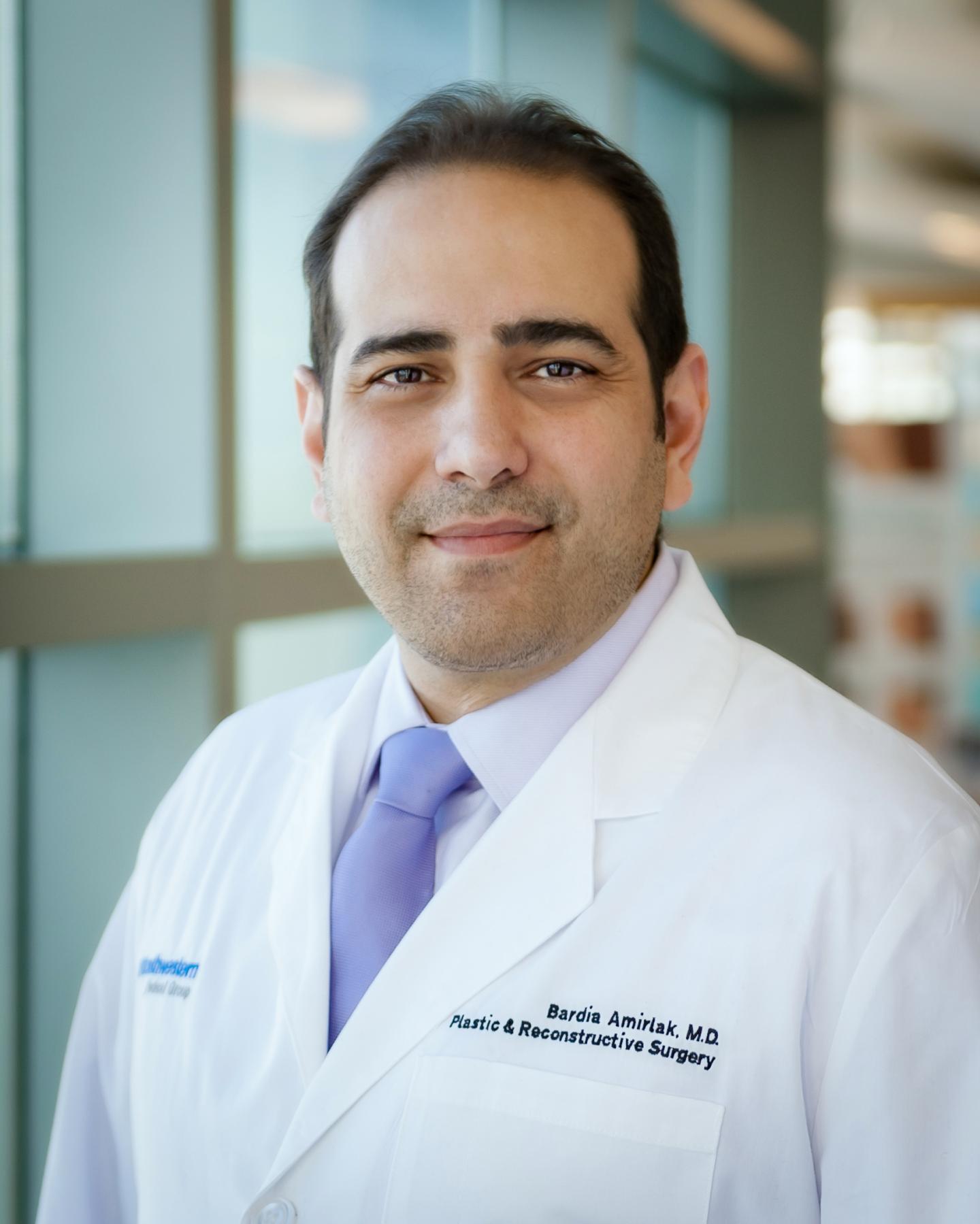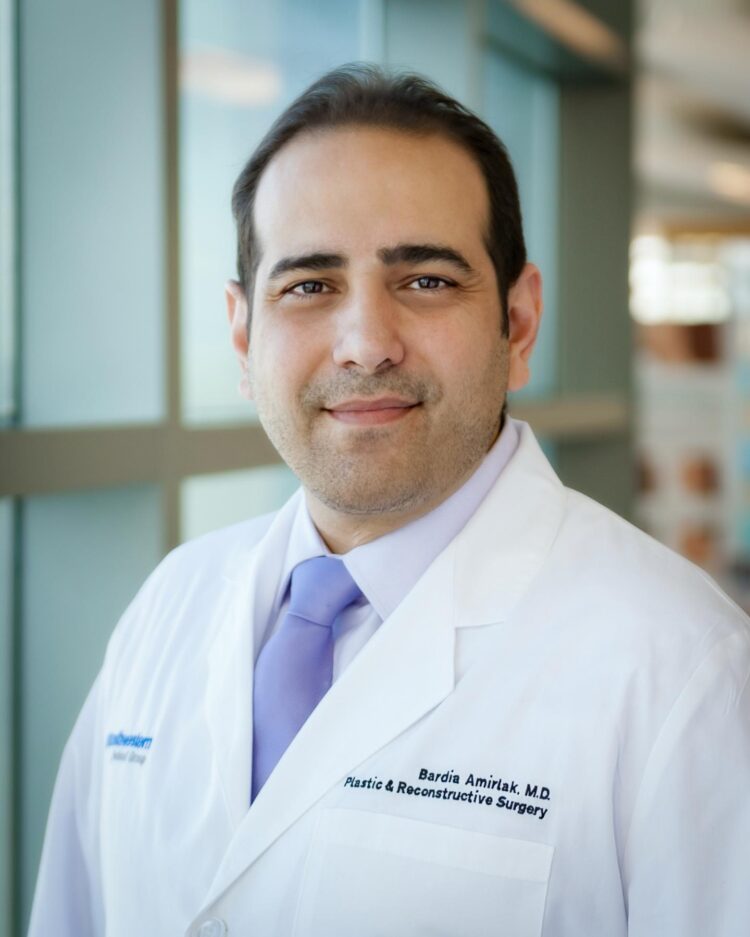
Credit: UT Southwestern Medical Center
DALLAS – Sept. 1, 2020 – Expanded telehealth services at UT Southwestern have proved effective at safely delivering patient care during the pandemic, leading to an increase in patients even in specialties such as plastic surgery, according to a new study.
The study, published in the Aesthetic Surgery Journal, illuminates the unexpected benefits that telehealth has had during the pandemic and provides insight into what this may mean for the future of medicine in the United States.
“Prior to COVID-19, it was not clear if telehealth would meet the standard of care in highly specialized clinical practices. Out of necessity, we were forced to innovate quickly. What we found is that it is actually a really good fit,” says Alan Kramer, M.P.H., assistant vice president of health system emerging strategies at UTSW and co-author of the study.
UT Southwestern was already equipped with telehealth technology when COVID-19 hit – but only as a small pilot program. Through incredible team efforts, telehealth was expanded across the institution within days, bringing with it several unanticipated benefits for both the medical center and patients.
“The conversion rate to telehealth is higher than in person,” says Bardia Amirlak, M.D., FACS, associate professor of plastic surgery and the study’s senior corresponding author. The study found 25,197 of 34,706 telehealth appointments across the institution were completed in April 2020 – a 72.6 percent completion rate – compared with a 65.8 percent completion rate of in-person visits from April 2019.
The study notes the significant increases in the volume of new patients seen by telehealth beginning in March 2020. This resulted from a combination of relaxed regulations and an increasing comfort level with telehealth visits among physicians and patients. UTSW saw the percentage of new patients seen through telehealth visits increase from 0.77 percent in February to 14.2 percent and 16.7 percent in March and April, respectively.
Even within a niche field like plastic surgery, the implementation of telehealth has been incredibly successful, demonstrating the tractability of telehealth to a wide range of practices. From April to mid-May, plastic surgery completed 340 telehealth visits in areas such as breast cancer reconstruction, hand surgery, and wound care, with completion rates similar to the whole of UTSW. Likewise, plastic surgery also saw a large number of new patients, who comprised 41 percent of the telehealth visits.
“The fear was that the platform wouldn’t be able to handle it: the privacy issues, insurance issues, malpractice issues … but it came together well and we were able to ramp up into the thousands, and were able to not only decrease patient anxiety, but also increase many beneficial factors, such as patient access,” says Amirlak.
The study reported several boons for telehealth patients, including reductions in stress, missed work, the number of hospital visits, travel time, and exposure to pathogens, in addition to improving access to care with the option for out-of-state consultations. Indeed, patients from 43 states and Puerto Rico have participated in telehealth visits at UTSW facilities since March.
Even as COVID-19 restrictions have eased in Texas, telehealth is still proving to be a major part of UT Southwestern’s clinical practice. “The feedback from patients has been very positive,” says Kramer. “We’re now sustaining 25 percent of our practice being done virtually, a major win for our patients. It’s changed the way we think about care.”
Whether this trend continues into the post-COVID-19 world remains to be seen, he says. But either way, Kramer says, it is clear that telehealth will be a useful tool.
The numerous benefits that telehealth has to offer are accompanied by several challenges, however, such as the practicality and risks of remote diagnostic medicine. Though technology is starting to address some issues with the development of tools such as electronic stethoscopes and consumer-facing apps that can measure blood oxygen levels and perform electrocardiograms, for example, some argue the value of the in-person physical exam cannot be replaced. Moving forward, Amirlak says, “it will be our responsibility as physicians and scientists to recognize the potential dangers of taking telehealth to the extreme right now and missing a clinical diagnosis.”
Aside from patient-facing issues, other challenges need to be included in discussions of the future of telehealth, including federal, state, and local laws; privacy concerns; and Health Insurance Portability and Accountability Act (HIPAA) regulations. Many statutes and restrictions have been loosened during the pandemic, allowing institutions like UTSW to implement telehealth rapidly and effectively. But the future of telehealth will necessitate the development of long-term regulations.
“Based on the trends, it seems that telehealth is here to stay. So it’s important to think about the concerns, and based on this information, the issues that we have and how we can resolve them going forward,” says Christine Wamsley, a UTSW research fellow and first author of the study. With the ramp-up of telehealth and related restrictions amid the COVID-19 pandemic, now may be the best opportunity for health care providers and governmental agencies to address these challenges and set out guidelines for the practice of telehealth.
###
The study was supported by co-author Jeffrey Kenkel, M.D., FACS, chair of plastic surgery, and with the efforts of Dunja Morgareidge, practice manager of plastic surgery, to bring telehealth to the department.
About UT Southwestern Medical Center
UT Southwestern, one of the premier academic medical centers in the nation, integrates pioneering biomedical research with exceptional clinical care and education. The institution’s faculty has received six Nobel Prizes, and includes 23 members of the National Academy of Sciences, 16 members of the National Academy of Medicine, and 13 Howard Hughes Medical Institute Investigators. The full-time faculty of more than 2,500 is responsible for groundbreaking medical advances and is committed to translating science-driven research quickly to new clinical treatments. UT Southwestern physicians provide care in about 80 specialties to more than 105,000 hospitalized patients, nearly 370,000 emergency room cases, and oversee approximately 3 million outpatient visits a year.
Media Contact
UT Southwestern Medical Center
[email protected]





